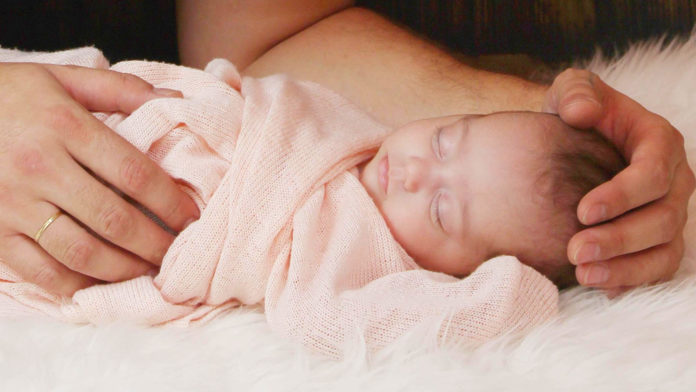A baby’s first poop is different from all the dirty diapers to follow. It even has a special name — meconium — and it’s thick, tar-like, and dark green. So how might this sticky substance predict allergy risk later in life?
In the womb, babies get nutrition from their pregnant parents via the umbilical cord, and if all goes well they don’t poop until after birth. That protects them from getting feces in their mouths or lungs because they live in a fluid-filled sac. But before birth, they do practice swallowing, and so meconium becomes a time capsule for all the substances they were exposed to in the womb.
Analyzing that first poop provides a rich data set that reflects the environment of the newborn gut, which is rapidly colonized with microbes soon after birth when a baby starts to eat for the first time. Our microbiomes are full of good microbes that are important to health, keeping harmful bacteria from taking up residence and helping us digest food. The richer this initial environment is, the better the odds are of establishing a diverse microbiome in early life, and the lower the odds of developing allergies.
Research led by microbiologist Brett Finlay at the University of British Columbia assessed meconium and stool samples collected from infants within the first two years of life. Based on the molecules present in the samples, the team used machine learning to uncover patterns in the composition of meconium that can predict whether infants go on to develop heightened allergy risk before their first birthday with 76 percent accuracy.
The study was published in Cell Reports Medicine.
The samples and health information of hundreds of infants were obtained through the Canadian Healthy Infant Longitudinal Development (CHILD) study. It follows children as they grow, instead of looking back retrospectively later in life. This is called a prospective study, and it allows researchers to more accurately learn about how early-life exposures lead to health and disease.
Infants with less diversity of metabolites like steroids, amino acids, vitamins and cofactors, and nucleotides in their meconium were more likely go on to develop atopy: a condition where the immune system produces too many IgE antibodies in response to harmless substances that raises their allergy risk. They also found reduced levels of molecules like estriol, which can help people tolerate common allergens.
That same meconium profile also predicts whether the infants would successfully establish keystone microbes in their gut that build a healthy early microbiome.
“This work shows that the development of a healthy immune system and microbiota may actually start well before a child is born — and signals that the tiny molecules an infant is exposed to in the womb play a fundamental role in future health,” said lead author Charisse Petersen in a press release.
Being able to identify newborns at risk of developing atopy could help doctors treat them earlier, and perhaps prevent many related disorders, like eczema (atopic dermatitis), food allergies, asthma, and allergic rhinitis. The process would be totally harmless to the newborn, with the first dirty diaper being the only sample needed.
A healthy early life builds the foundation for a healthy future. The more information that healthcare professionals can access from a baby’s very first day, the better we can support that strong start.








































